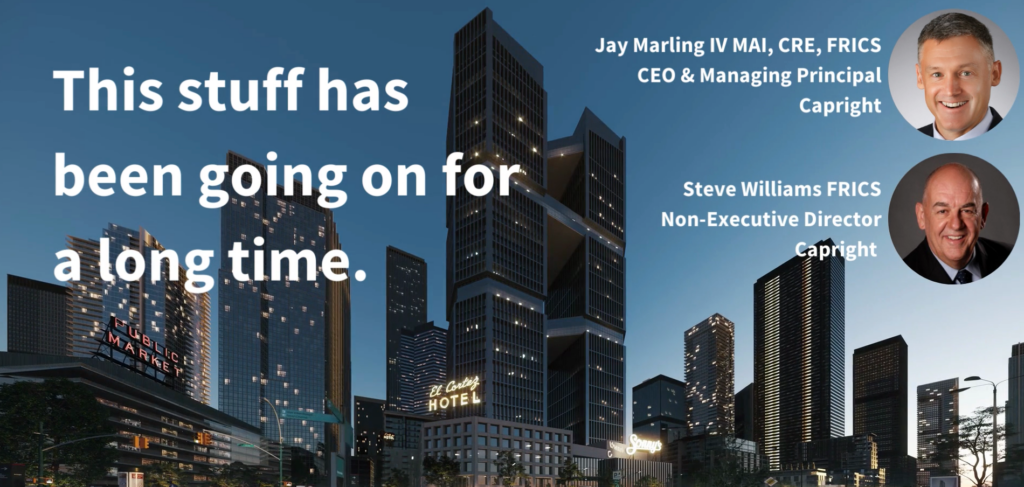This stuff has been going on for a long time.
August 14, 2023
Despite a continuing focus on the post-COVID re-orientation of commercial real estate, the truth is many trends had been afoot for decades. We are reminded of Ernest Hemingway’s response when asked how he went bankrupt. “Two ways”, he said, “gradually then suddenly”.
The same applies to commercial real estate. A decade prior to the pandemic, it had gradually been adapting to societal shifts. COVID was merely the accelerant. Office and retail had gradually been losing ground while multi-family, industrial-distribution properties and, to a lesser extent, the hospitality sector, were experiencing gradual growth.
The seeds of today’s office vacancy crisis were planted in the early 2000’s when employers first offered telecommuting as a way of motivating and retaining office-workers. Over the years, software upgrades and faster computing enabled daily commuters to seamlessly transition to remote or hybrid working. A decade of economic prosperity (2010-20) masked the negative impact this move to remote working had on office occupancy levels. But once COVID hit and video conferencing became ubiquitously accepted, the cracks of office under-occupation became obvious. The overdue debate about the adaptive re-use of traditional offices (still largely unresolved) suddenly took on an air of urgency.
But for every force, there is a counter. Rising office vacancies were partly balanced by a growing demand for larger residential spaces. Not even steeply rising mortgage rates could slow the trend for tablet-enabled, digital nomads to seek larger apartments, condominiums, and even lodging. Office workers had already begun to combine work and family travel. Since the pandemic, the travel industry experienced a growing demand from companies planning team meetings in remote locations as surrogate get-togethers for now-extinct office interactions.
Retail too (with the notable exception of grocery stores) while badly hit by COVID, had shown signs of softening many years earlier. Just as “big boxes” had crushed Main Street in the 1980’s, so e-commerce and the instant-delivery expectations of on-line shoppers had begun to undermine the demand for physical retail space. Once the pandemic hit and in-person shopping became increasingly difficult, the demand for distribution warehousing exploded. The industrial sector suddenly found itself the undisputed darling of CRE investors.
But the retail story has turned more positive. Unlike offices, predictions of total retail demise were premature. With a strong history of reinventing itself, the sector has adapted rapidly to change. Property owners have been quick to update tired storefronts, grocery stores have become more competitive, and malls have doubled down on their commitment to provide an all-day, recreational experience. Some legacy Main Street retail spaces have transformed into high-end food and beverage outlets and savvy self-storage operators have converted otherwise dark retail spaces into upscale self-storage projects.
And what of the future? The only certainty is that the seeds of shifting trends are already sown. If we believe Hemingway, the trick is to track their momentum from ‘gradual’ to ‘sudden’.




